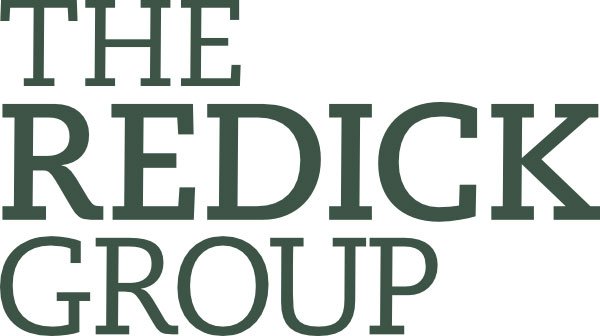Proof, Not Promise: How Do You Build a Credible Executive Resume or Professional Services Website?
"Proof, not promise" has always been one of The Redick Group's guiding principles. What began with crafting executive résumés, LinkedIn profiles, and board bios—each achievement substantiated by real evidence—has grown into a similarly defensive approach for professional services firms. In today's marketplace, credibility speaks louder than lofty claims.
Where "Proof, Not Promise" Began
The "proof, not promise" concept emerged from a challenge familiar to every senior leader: as you advance, expectations shift. Early in your career, potential and ambition may open doors. At the executive level, what matters is readiness, credibility, and a clear record that you are the company's next leader for the empty position. In short, professional identities and brands must be built on outcomes, not intentions.
Moving Beyond Claims: The Credibility Challenge
In today's marketplace, anyone can make claims about their expertise or service. But decision-makers—whether they're on a hiring committee or evaluating a professional services firm—are looking for something more. They want to see evidence. Many have been burned by empty promises in the past, and they're skeptical until they see tangible proof.
Consider the example of a new consultant at a top firm presenting to a Fortune 50 CEO. Credentials alone aren't enough; it's the substance of the analysis and the weight of the facts that earn trust. The same principle applies to executives presenting to their boards or professionals building their reputations in the market.
From Buzzwords to Substance
Traditional approaches rely on broad statements and generic claims. But at the executive level and in professional services, what sets you apart is the ability to demonstrate real impact through specifics, stories, and measurable outcomes.
Transforming Professional Materials
Traditional executive résumés often rely on broad statements—"strategic, results-driven leader with strong business acumen." At the executive level, these phrases are expected; what sets you apart is the ability to demonstrate real impact. Instead of vague claims, our approach highlights specifics.
Rather than saying, "responsible for budget management," we might write, "managed a $5 million budget, reducing costs by 15% while improving service delivery." Instead of "strategic leader," we show how you led $10M revenue growth by expanding into new markets. Every detail is chosen to illustrate not just what you did, but the difference you made. This philosophy extends to websites and digital branding for firms. We focus on stories of transformation—how you redefined strategic networks, led enterprise-wide shifts, or delivered measurable growth—because these are the narratives that resonate with sophisticated audiences.
The Case for Evidence-Based Messaging
Research and experience show that clients, customers, and employers are more likely to trust what you can prove. Modern decision-makers rely on reviews, testimonials, and case studies to inform their choices. They want to see that you've delivered results for others in situations similar to their own.
A message built on proof establishes trust and differentiation. Instead of asking prospects to take your word for it, you show them what you've accomplished, using stories, data, and outcomes. This approach fosters credibility and sets you apart in a crowded market.
Putting Proof into Practice
The power of "proof, not promise" extends across every touchpoint in your professional brand. When applied consistently, it creates competitive advantages that are difficult to replicate and resilient in changing markets.
Applying the Philosophy Across Services
For executives, this means quantifying accomplishments, demonstrating leadership through concrete examples, and showing business contributions with measurable results. In firm branding, we transform leadership stories into credible assets, ground narratives in factual achievements, and build integrated brand identities that align both functional and emotional benefits. On LinkedIn and other digital platforms, we emphasize evidence-based storytelling—using specific metrics and examples to showcase real results.
When we develop professional materials, we elevate content beyond a simple list of tasks or achievements. We focus on the strategic value—how your leadership transformed operations, redefined strategies, or led enterprise-wide change. Proof can take many forms: statistics, awards, testimonials, case studies, and concrete examples of transformation. Each element is chosen to reinforce your credibility and tell a story that matters to decision-makers.
The Competitive Edge of Authenticity
In a world saturated with marketing claims and bold guarantees, proof is what turns skepticism into trust. Credibility is not something you declare; it's something you demonstrate, time and again. By grounding your message in verifiable evidence and meaningful information, you create a lasting advantage—one that's hard for competitors to replicate and resilient in the face of market challenges.
Building Brands That Are Harder to Imitate
The power of "proof, not promise" is rooted in human psychology. People, especially highly educated professionals, are naturally skeptical of unsupported claims, but they respond to evidence. Doubt fades when claims are relevant and provable, and maybe even a bit relatable.
In professional services, where futures depend on expertise and reputation, "proof, not promise" is a marketing strategy to live by. It builds brands that are harder to imitate, more resilient in challenging times, and more credible to sophisticated audiences.
If you want to stand out, bring both substance and style to your professional narrative—or that of your firm. We can help you embrace niche positioning and ensure every communication is grounded in reality.
About Jared
Jared Redick is a San Francisco-based executive coach, communications strategist, and brand development consultant with more than 25 years of experience helping companies and high-level professionals position themselves for growth and change. Get career coaching here, or co-develop your professional identity here.


